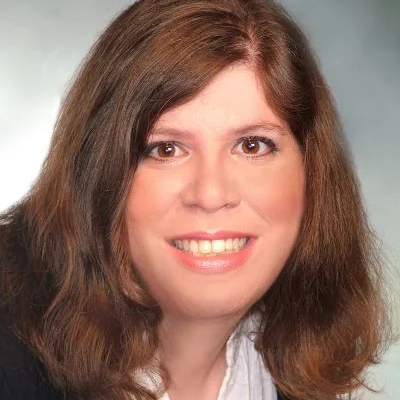Stephen King and Laura Redmond
*This article is derived from a webinar that occurred in March 2017. Its content remains relevant to the accounting industry today.
Distinction in your practice is key because the broader accounting industry is commoditized and crowded. We have a supply and demand problem where there is much more supply than there is demand. And everybody has begun competing on price points in order to secure a larger and larger client base, and as a result, survive this pricing war that's happening in the industry.
The perception of the accountant is overhead; no value; obligation; requirement; compliance; and many accountants have not done much, unfortunately, to move their brand, their message, their value proposition—their distinction—from compliance, obligation and requirement into value-add. So, to excel, to reach new heights, to distinguish yourself, you have to be different from your peers. You have to become and remain distinctive.
Laura Redmond and Steve King are coming on board to talk with us about their journey toward distinction and their practices. They have arguably two of the most distinctive practices in the entire country. Stephen King is the President and CEO of GrowthForce. He has a passion for helping businesses and nonprofits reach their growth potential, and this passion has led GrowthForce’s success as one of the nation's largest cloud-based bookkeeping, accounting and controller services. He was also one of the first. When he's not immersed in helping his clients achieve growth, Steve strives to be a role model to his employees by having proper work-life balance, or as we like to say at Woodard, work-life harmonization. Off the clock, Steve is often on the go with his active family. He can be found puttering around his yard, looking for ways to help his garden grow. A lot of times we don't get that literal ability to stop and smell those roses, if we have a firm the size of Steve's. A lot of his distinction has been technology combined with culture.
Joe: Steve, welcome.
Steve: Thanks, Joe. Thanks for having me.
Joe: Well, it's great to have you here. And I'm very excited about the session that you're going to be teaching at Scaling New Heights. Your session is focused on managing personal and work responsibilities and high-demand professional environments. Can you give us a quick context for this? I mean, tell us a little about your business and your family, and at least one way that you've achieved success in this as a husband, a father and an owner of a thriving business.
Steve: Sure. GrowthForce is the successor company to a company I started in 1995, when Netscape 1.0 came out, called Virtual Growth. That was the very first cloud accounting services company, before it was called the cloud. And I started that business with one goal in mind: that I could coach my kids’ sporting teams, because my dad was an auditor and he flew around the country for Chrysler and GM and was never there to be part of our lives.
After about three years, I got big eyes. We started raising venture capital funding. We got $43 million in funding over from 1999 to 2001. And I found myself getting on the JetBlue plane on Monday morning and flying back on Thursday to get the redeye so I could run a management team meeting on Friday morning with 250 people in seven cities. I had to work all weekend just to catch up on the things that I didn't get done during the week. I stepped back at one point said, “What have I done? This is not why I started a company.”
I'm lucky. I got another bite at the apple when we started GrowthForce in 2005. I took a lesson that I learned from the CEO of Insperity, Paul Sarvadi, who, when he moved us to Kingwood, Texas, said, “You know, you New Yorkers live to work. I'm going to teach you how to work to live.” And that's become my mantra, really starting with “Why? Why did I start this company?” Then I work backwards from there to make sure that I put first time for myself: my mental health, my physical health, my spiritual health, and then my family. And I was able to coach baseball, basketball, and girls’ soccer, even though I'd ever played the game, for seven years, while my kids were in elementary school, and it was really a chance to live the dream and have it all.
Joe: We at Woodard talk about a concept called work-life harmonization. We've been talking about that for a number of years. And we like that a lot better than work-life balance, because in work-life balance, you are creating silos. This is my life. This is my work. How much am I spending in terms of time, which I think is a very ineffective measurement for professional and personal life. How much time am I spending at work? How much time am I spending at life? Let's try to even out that time with no consideration for the quality of time I'm spending with my family, for the effectiveness of my time, and my clients, in my client relationships, or the growth of my business. And the two never really converge at all.
I really like what you said about rather than living to work, you work to live, because it's sort of reminiscent of [Stephen] Covey, who says, “Begin with the end in mind.” And it sounds like that's what you did. You began with the end in mind, and that helped to create the right prioritization for you. How does this pair up to the way that you prioritize your personal life and your family life?
Steve: I really liked that description. And it makes a lot of sense. It helps you guide your decision-making. What it meant for me was that I needed to have an office in Kingwood, where I lived, so that I could help start the chess club in the elementary school or read to my kids’ classrooms when they were in kindergarten and still wanted me to come into the classroom. You start making decisions around how you have that quality of life with your family and how you can be involved. My office is across the street from the dance studio, because my wife runs the Kingwood Youth Ballet, and my daughter is a ballerina there.
By being in charge of the business, you get to make decisions that will allow you to have that synchronization as an accountant. My natural inclination, though, was to actually look at hours. So I took a slightly different approach when I started GrowthForce. I said, “Okay, I'm going to make sure that I'm living the dream this time.” And I found that when I was able to study how many hours are available in my life and where I want to spend them, it forced me to put my job in a box to be able to ask how many hours I am willing to put into GrowthForce. And I love what we do. I'm passionate about accounting for small businesses. And I could do this 24 hours a day, seven days a week if I didn't stop myself. I found that I have a natural workaholic tendency.
So by forcing it into a box, I was able to say, “All right, I have a 50-hour work week, because when you're starting a new business, 35 or 40 hours per week isn't realistic.” But I made myself organize my time since I had a limited amount of time. Instead of having a mindset of “It’s all right, I didn't get this done today. I’ll just do it on Saturday,” or “I'll get this done on Sunday night and use my time then or wake up early on Sunday morning,” I didn't let it be an option.
Even as we've grown now to 50 people, 13 years later, I still start my week with strategy and planning. I have an hour budget every Monday morning. And at the end of the day on Friday, I have a one-on-one with each of my four direct reports, to plan. And then I have a team meeting for two hours every week to plan and process issues. What that means is I end up spending 15 to 20 percent of my time planning for the other 80 to 85 percent. And that simple technique means you're working on the business. And you figure out how you are going to use that 35 or 40 hours. And when I was billable, I was the widget when I needed to be out there making money. I said, “Okay, I am allowed to be billable 50 percent of my time 20 hours a week. When I ran the math, I could make a nice living. But it meant that I had to be really disciplined about the sales and marketing time, the business development time, the product time, the training time.
Joe: You know what I love about your model? You forced yourself into a certain-sized container on the dedication you were going to give to your business. That did not hinder your personal goals or your family life. And it sounds like it forced you to be hyper-efficient in the way that you manage that block of your life. And you gave us some examples. I love the way you're compartmentalizing as a leader. And you're obviously delegating, because you've got direct reports, and those direct reports have direct reports. By creating a multi-level reporting structure, you're able to maximize time. That was a great suggestion. And then you compartmentalized your energies into business development efforts. Are there any other suggestions that you can give us a teaser for?
.png?width=150&height=63&name=TWRlogo-regmark_blueblack%20(1).png)
.png)










Do you have questions about this article? Email us and let us know > info@woodard.com
Comments: